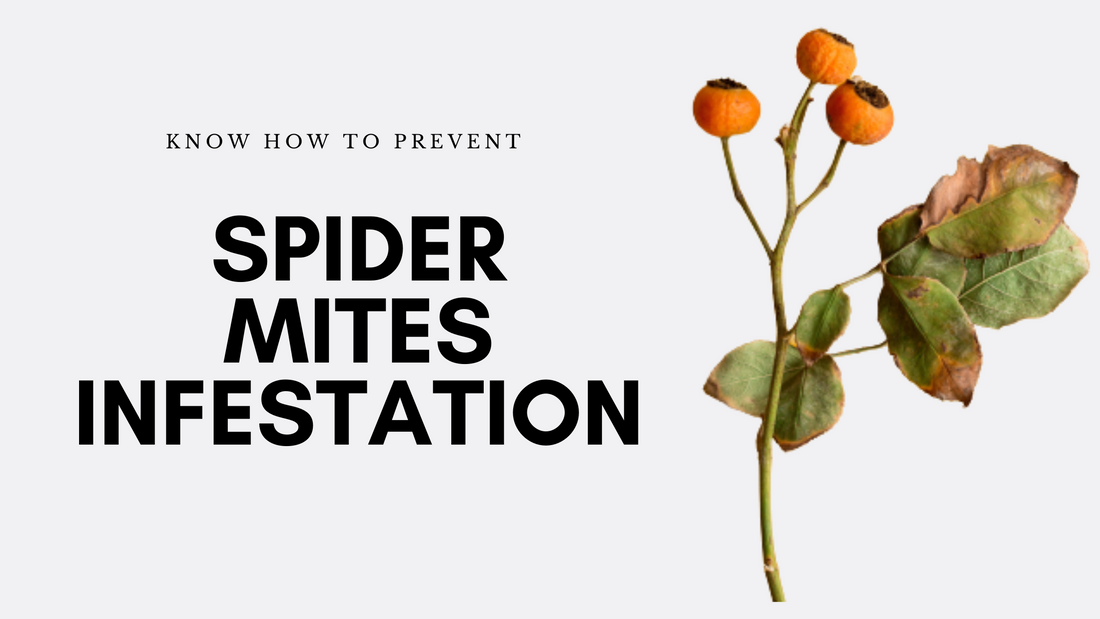
Identification/ How do you know it’s spider mites?
Cobwebs on your plant may indicate that it has spider mites, although, make sure it’s not because you’ve forgotten to dust it in a long time! Spider mites will appear as tiny specks of white or yellow, clustered around the stem on the underside of the leaf. You may need a magnifying glass to clearly see these annoying pests at work (contemplating destruction!).

On flowering plants, spider mites will mar the lovely blooms and ruin the aesthetic appeal. Vibrant leaves may become discoloured (because the mite feeds on chlorophyll that makes the plant green) or even curl up and fall. A few of them might inflict negligible damage on the plant, but things may spiral out of control if they evolve into a devastating population.
Control & Management/ What you can do to control the spread
It’s crucial to be proactive and spot spider mites early to steer clear of an all-out infestation. Keep your plant safe by removing dust and cobwebs with a regular wipe down.
Still, if you notice the above damage symptoms, or the spider mites’ trademark webbing, then you should execute the following action plan:
- Spray the stem and underside of the leaves thoroughly but gently with clean, warm water.
- Use an organic insecticidal soap, preferably in the morning or evening.
- You can also apply natural neem oil extract, which is an excellent pest repellent.
- Avoid chemical pesticides. The most effective solution is to draw spider mite destroyers such as lady bugs and lacewings into your flower garden. Let nature handle it!
- However, if the intensity of the infestation is threatening to the life of the plant, you may need to prune leaves, stems and other affected areas. Remove any parts beyond repair and discard it in the trash (not in the compost pile!!). You may even need to part with your beloved plant to prevent the mites from invading further into your treasured garden.

IMP!! Always use organic “bug” fixes. Chemical pesticides may be quick to get rid of the mites, but it is NEVER the best solution. What’s more; these strong chemicals can pose even bigger problems for your plant. Apart from being detrimental to soil life, they can actually aid the spread of spider mites by warding off the beneficial insects that prey on them. Mites are also known for their ability to quickly build immunity against various pesticides. So they can even come back stronger!
Common Houseplants Prone to Spider mites
- Alocasia ‘Frydek’
- Bird of Paradise
- Cast Iron plant
- Chinese Evergreen
- English Ivy
- Umbrella plant
- Various palms (Bamboo, Fishtail, Parlour)
Bugging Fact: Spider mites are wind surfers. They forge colonies with their webs, allowing them to ride the breeze and disperse over your garden within days or weeks! Curbing the spread and disposing infested parts is critical.
Growing your plant knowledge also calls for improving your understanding of menacing creatures that can set off panic in your garden. So stay tuned for more content on these dodgy, plant-starved pests and how to deal with them. If you’ve devised any other strategies in your battle against spider mites, please let us know!


